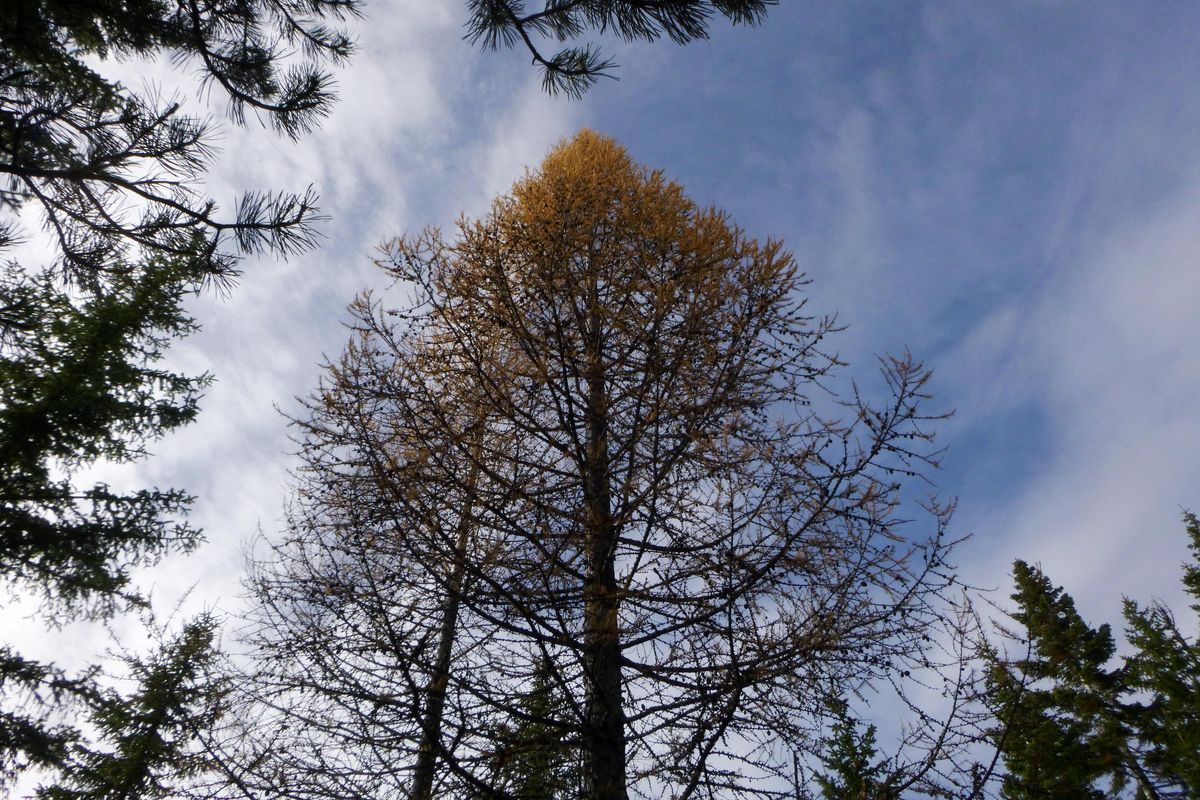Larch trees still showing their true colors

Almost naked last week, the larch still held enough color to stand out in the crowd of evergreens.
Clusters of green needle-shaped leaves emerged during spring like a feathery fleece on the tree’s branches. During summer it pretty much blended into the forest of pines and firs.
But by mid-October, the larch glowed like a golden torch. A hunter could gain an extra 15 minutes of safe-hiking visibility from the glow of larch needles blanketing a trail.
All of the larches, including the one I settled under as I hunted for elk, were shedding needles. Larches are deciduous members of the pine family. The frames of these cone-bearing trees will stand bare to the elements through winter.
Larch, known poetically by Algonquian “tamarack” and scientifically by Latin “larix,” is a tree praised by both poets and foresters in much of the world, especially the mountains of North America and Europe.
Ten larch species grow in the northern hemisphere, three in the United States and two – Alpine and Western – in the Inland Northwest.
Alpine larches grow on high ridges where weathered aging specimens resemble trolls with outreaching arms. These gnarled trees have little practical value, other than providing handy branches for hoisting campers’ food beyond reach of bears.
Western larch, however, grows tall and straight at lower elevations and is prized by the timber industry. Because of their handsomeness, larch logs are peeled for the outside layer of plywood sheets.
The toughest, heaviest 2x4 in the frame of your house probably is a Western larch.
Woodcutters know that a dead larch splits easily and burns more efficiently than pine or fir.
Chilean poet Pablo Neruda used emerging larch needles as a metaphor for his lover’s softness. Oregon poet George Vern made the tree a symbol for the strength of his love.
Peter the Great imported larch to Russia to grow masts for warships.
But despite even what scientists know about the larch, it remains uncertain why the tree’s needles turn from green to yellow and sprinkle to the ground each autumn.
The trait probably helps larch withstand cold, minimize snow-load damage to branches and more efficiently use nutrients drawn from the soil, they say.
Or maybe they do it just to be pretty.
Early November winds unleashed a festive flurry of larch confetti as if celebrating my lack of success in a week of hunting.
Yellow needles glowing brilliantly against a blue sky pelted the bill of my cap like organic sleet. Dazzling needles were littering my shoulders. They seemed to work in collusion with the elk by smothering their tracks under a forest carpet of gold. The great elk season cover-up was underway.
Larches, brilliant in the autumn light, were distracting by day, catching a hunter’s eye when it should be scanning for game.
Then, as the sun sets and the hunter slings his rifle and hikes back to camp in the twilight, the day’s unleashed larch needles are more conspicuous than ever as they find their way into his underwear to prick where the sun don’t shine.